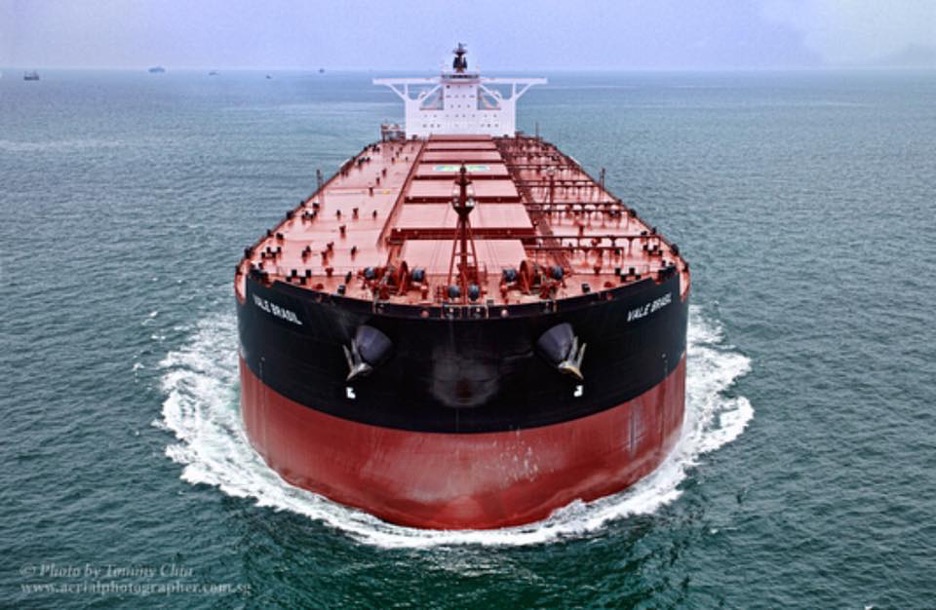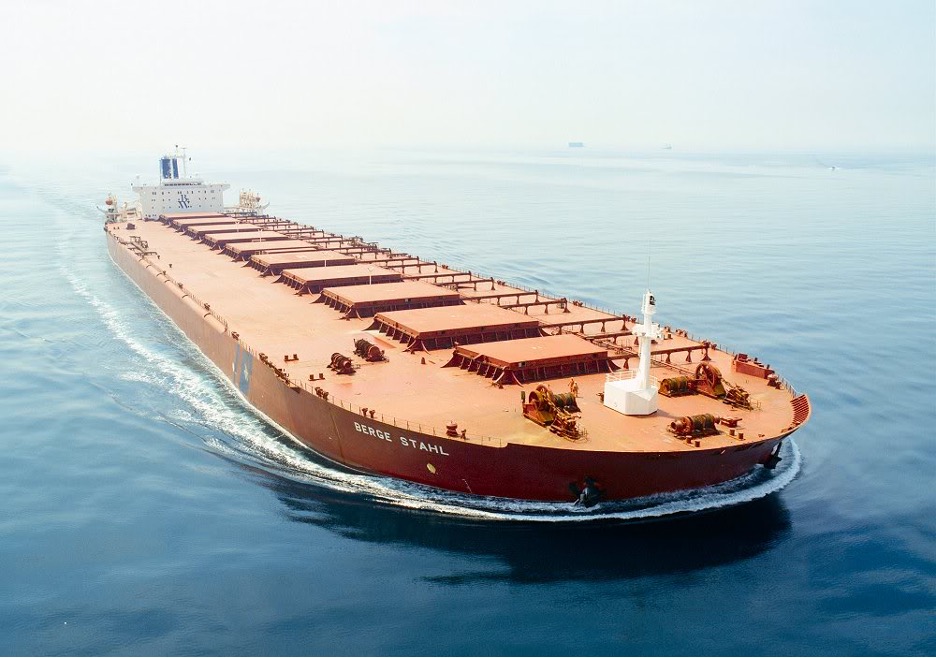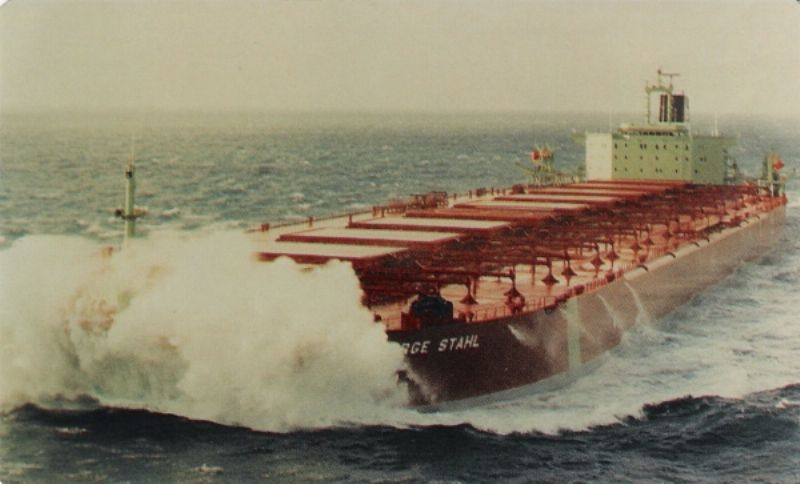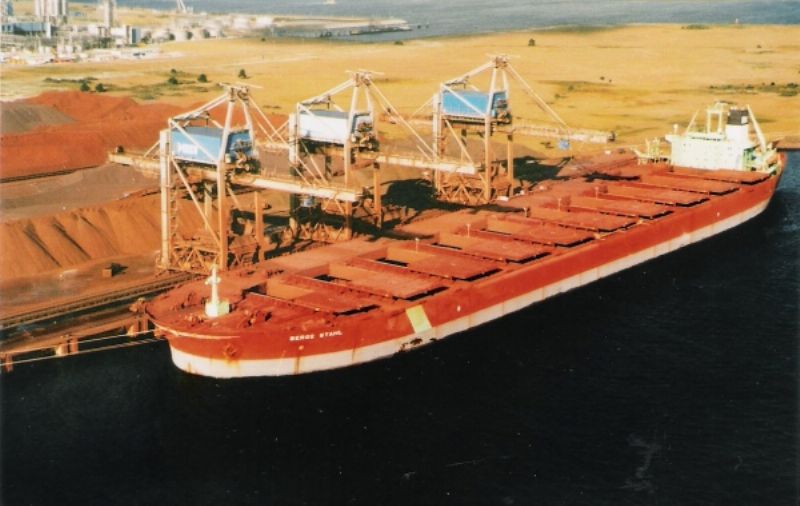Cargo ships are an essential part of international trade, transporting goods all over the world. There are many different types of cargo ships, each suited to carrying different types of cargo and operating in different environments and Capesize bulk carrier is one of the most famous because of its sizes.
A Capesize bulk carrier is the largest type of bulk carrier, typically having a deadweight capacity that ranges from 150,000 to 400,000 tonnes. A bulk carrier, also known as a bulker, is a merchant ship designed to transport large quantities of unpackaged bulk cargo, such as grains, coal, ore, steel coils, and cement.
Capsize bulk carriers make up to 9% of the global bulk carrier fleet and are flagships in the largest dry bulk shipping companies. This class of bulk carrier is used to transport large volumes of dry bulk commodities, over long distances.

What are Capesize Bulk Carriers?
A Capesize Bulk Carrier is a type of large bulk carrier vessel that typically ships raw materials such as coal and iron ore around the world. Also known as Cape ships, these vessels are larger than any other type of bulk carrier and are generally used to transport large amounts of cargo over long distances.
These vessels get their name from the fact that they are “too large to fit through the Suez or Panama Canals” and are therefore forced to go around Cape Agulhas or Cape Horn.
Capesize vessels are the largest dry bulk marine option, measuring roughly 230m to 270m long with a draft of 17m and nine cargo holds. Due to their larger size, only a few ports can accommodate them while fully loaded.
Capesize ships usually range from 120,000 to 400,000 DWT. The most common size is between 150,000 and 200,000 DWT, but there are several specialized subcategories within the Capesize class:
- Newcastlemax: Ships with a maximum DWT of around 185,000–210,000 and designed specifically to fit the coal-loading facilities at Newcastle, Australia, one of the world’s largest coal export ports.
- Very Large Ore Carriers (VLOCs): These enormous ships often exceed 300,000 DWT and are primarily used for iron ore transportation, especially between Brazil and China.
- Guaibamax: A subcategory of VLOCs with a DWT of up to 325,000, optimized for operations at ports like Ponta da Madeira in Brazil.
- Chinamax: Massive bulk carriers with a DWT of around 380,000–400,000, designed to fit China’s largest deep-water ports, often used for iron ore and coal transportation.
Each of these subcategories has specific design considerations tailored to the routes and ports they serve, emphasizing the versatility of the Capesize class in global bulk shipping.
Capesize vessels are used in the transportation of coal, iron ore, and commodity raw materials—most commonly between Australia and China, and Brazil and China.
The design characteristics of Capesize Bulk Carriers enable them to carry extremely large volumes without compromising structural integrity or payload capacity. This is due to their robust hull construction technology integrated into these vessels’ design configuration which makes them the most ideal option over other vessels when transporting huge amounts of loose material across oceans.
With dimensions that can exceed 400,000 dwt, Capesize bulk carriers are typically used to transport materials from large commodity-producing countries, such as Australia and Brazil, to consumers in Asia. Their large size, typically around 300,000 metric tons, allows them to transport large volumes of materials at a lower cost per unit than smaller vessels.
Capesize bulk carriers are an important part of the global shipping industry, as they provide an efficient and cost-effective way to transport large amounts of dry bulk commodities around the world. With dimensions similar to those of traditional tankers – up to 340 meters long – these ships have been described as ‘the ocean-going trucks of the country’ by some maritime experts.
The Benefits Of Using Capesize Bulk Carriers
The primary advantage associated with the use of Capesize bulk carriers is that they can move large quantities at a low rate due to their relatively large carrying capacity as compared to other vessel types. This translates into reduced fuel costs associated with multiple voyages across similar distances traveled by smaller vessels when carrying lower volumes of goods.
Additionally, these huge ships require less crew than smaller vessels do; thus resulting in overall operating costs being reduced significantly when factoring labor expenses into account—which makes them ideal for long voyages over distant routes such as transoceanic across vast areas like the Pacific Ocean
Furthermore, Capesize Bulk Carrier vessels have increased maneuverability due to various features such as bulbous bow shape making navigation easier even during tight turns or narrow passages between ports.
Another benefit is increased safety for both crew members aboard the ship as well as people working ashore when it comes to time for loading/unloading operations. This is a result of the crane’s capacity being able to handle bigger loads without manual help, fewer persons need to be involved in such activities thereby reducing potential risks derived from human error during critical moments during those processes.
Capesize Comparison of Cargo Capacity And Freight Rates
Creating a comparison table for cargo capacity and freight rate calculated to USD per metric ton (mt) requires specific data for each vessel type. While I can’t provide real-time or current data, I can illustrate what such a table might look like based on hypothetical or general industry data.
| Vessel Type | Cargo Capacity (DWT*) | Freight Rate (USD/mt)** |
|---|---|---|
| Capesize | 100,000 – 400,000 | $15 – $25 |
| Panamax | 60,000 – 80,000 | $20 – $30 |
| Supramax | 45,000 – 59,000 | $25 – $35 |
| Handysize | 15,000 – 35,000 | $30 – $40 |
*DWT: Deadweight tonnage is a measure of how much weight a ship can carry, including cargo, fuel, crew, and provisions, without sinking. It is one of the most important measures for cargo vessels as it directly relates to the income-earning capability of the ship.
**Freight Rate: This is a simplified representation and the actual freight rates can vary widely based on a multitude of factors including the route, demand, supply, fuel costs, and other market conditions. The rates provided here are purely illustrative.
Please note that the actual cargo capacity and freight rates can fluctuate based on market conditions, the specific ship’s characteristics, the commodity being transported, and other logistical considerations. For accurate and current rates, one would typically consult a shipping index or get a quote directly from a shipping company or broker.
Limitations of Capesize Bulk Carriers
Capesize bulk carriers face several limitations due to their large size and draft. These limitations include:
- Restricted Port Access: Due to their substantial draft and overall size, Capesize vessels are limited to deep-water ports that can accommodate their under-keel clearance requirements. This restricts the number of ports they can visit and requires careful planning to ensure the ports have the necessary infrastructure.
- Higher Harbor Fees and Associated Costs: The massive size of Capesize carriers often leads to higher harbor fees. These ships incur greater costs for services such as piloting, tugging, and mooring, which are typically based on the vessel’s size and tonnage.
- Dependency on Certain Global Trade Routes: Capesize bulk carriers are primarily used for long-haul bulk trades, which means they are heavily reliant on specific global trade routes. These routes are typically between continents where large quantities of commodities like iron ore and coal are transported. The dependency on these trade routes means that any disruptions can significantly impact the operation and profitability of Capesize vessels.
The Challenges Associated With Using Capesize Bulk Carriers
There are some challenges associated with using these ships such as their high operational costs due to their high fuel consumption needs – a result of their huge size. along with difficulty maneuvering in tight harbor conditions that require more crew members than similar-sized vessels. The same is also required for maintenance purposes thus increasing expenses further even in good weather conditions.
Furthermore, because of their size, these ships require specialized port facilities in order to facilitate quick turnaround times from port to port thus reducing flexibility when compared to other bulk carriers available today
Every year, structural failure of bulk carriers kills a large number of seafarers. Capesize carriers are particularly vulnerable to cracking because of their great length, their trades in high-density cargo, and the rapid rates of freight operations.
It takes an experienced crew to effectively operate a Capesize vessel due to its complex design and dynamic characteristics. They require special knowledge regarding loading patterns, fuel efficiency optimization strategies, as well as overall navigational processes. Particular attention must be paid when navigating in tight channels or areas with shallow water depths; this requires expertise on the part of the crew throughout the voyage.
The World’s Largest Bulk Carriers
The Valemax-class ships are very large ore carriers (VLOC) owned or chartered by Vale S.A., a Brazilian mining company (thus the name). This 68-ship fleet transports iron ore from Brazil to ports in Europe and Asia. In terms of DWT, Valemax is the largest bulk carrier class. The Valemax-class ships have a deadweight capacity ranging from 380,000 to 400,000 tons. They are also among the largest ships in service today of any type.



The Berge Stahl, the Largest Ore Carrier on the Ocean at 1,122′ before launching MV Vale Brazil
MS Ore Brasil is the most well-known ship of the Valemax class. Launched in 2011 as the Vale Brasil her name was changed to MS Ore Brasil in 2014, 362 meters long, and 65 meters wide, with a hull depth of 30.4 meters, she has seven cargo holds with a total gross capacity of 219,980 cubic meters and a net tonnage of 67,993. She has a deadweight tonnage of 402,347 and mainly transports iron ore from Brazil to China around South Africa through the Cape route.
MS Berge Stahl was the world’s longest and largest bulk carrier until 2011 when MS Vale Brasil was launched. She was built by Hyundai Heavy in 1986 and measures 342.08 meters in length, 63.5 meters in breadth, and 23 meters in a draft. Her top speed is 13.5 knots. Currently owned by the Singaporean-operated shipping business Berge Bulk, MS Berge Stahl has a deadweight tonnage of 364,767, which is only surpassed by Valemax class ships.
Brasil Maru and Tubarao Maru are third on the World’s Largest Bulk Carriers list. The older sister, Brasil Maru, was constructed in 2007. She is capable of hauling 327,017 t DWT. She is 60 meters in breadth and 340 meters in length. This ore carrier’s reported current draft, while it is currently flying the Panamanian flag, is 20.6 meters.
Tubarao Maru, her younger sister, was constructed a year later. She is flying the Panamanian flag as well. Tubarao Maru is 340 meters long and 60 meters wide, just like her older sister. With 326,964 DWT, she has a slightly lower carrying capacity. Naturally, this enables her to move at a faster pace – 14.4 knots maximum and 13.2 knots on average, compared to 12.6 knots maximum and 11.5 knots on average.
As you can see, the speed of these huge vessels remains within the range of average speeds of cargo ships, that we wrote about earlier.
Summary
Bulk carriers have come a long way since the first one was built in 1852. Today, they are designed with safety and durability in mind while also maximizing capacity. Bulk carriers make up 21% of the world’s merchant fleets and they come in all different sizes, from single-hold mini-bulk carriers to mammoth ore ships that can carry 400,000 metric tons of deadweight (DWT).
Capesize bulk carriers are the ideal ships for transporting large amounts of cargo over long distances. Their large cargo capacity, excellent fuel efficiency, and advanced safety features make them the best choice for transporting bulk goods over the seas.
- Types of Gas Carriers as per IGC Code – April 22, 2025
- Wind-Assisted Propulsion Systems (WAPS): A Game Changer for Maritime Decarbonization – February 6, 2025
- 10 Boat Salvage Yards in California – January 25, 2025



